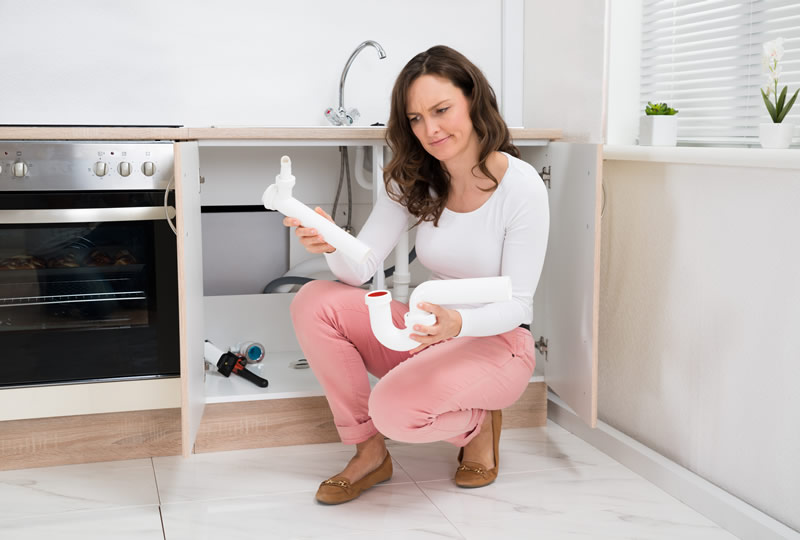With winter fast approaching it’s easy to just let things be and put them out of your mind. However, in cold environments letting your home brave the winter without heat or power and you could be facing huge problems later. In this article I’ll step you through ways that you can winterize your home safely and without needing to hire a contractor.
Why Do You Need to Winterize Your Home?
The concept of winterizing your home may seem a little strange to some. But there are many reasons why someone would want to winterize a home. Vacation homes are one of the biggest reasons most people have reason to winterize for. A home may be for sale and empty. Another reason is that you could be doing renovations on a home and it’s become a prolonged process. Whatever the reason you have for needed to winterize your home, we’re here to help you protect it from old man winter quickly.
Make Sure Your Water is Turned Off
The main problem with homes being damaged in winter typically comes from water. Water in pipes and things will freeze and cause damage to your home. So the very first thing you’ll need to do is locate the shut off valve which controls the water to your home. If you can’t locate the shut off valve there may be a customer access point at your water meter. If you’re still unable to locate the shut off valve, then you can call the water company and have them shut off the water. They may charge a fee however.
Drain All Faucets
Turn on each faucet and let the water drain from each one. There may be only a small bit of water coming out at first. Once you get everything completed and drained down be sure to go back through and turn every faucet back off. You don’t want ants or insects to invade your water system. You’ll also need to pour about a cup of anti-freeze down each sinks drain pipe because of p-traps holding water. You’ll need to pour about a cup full down the shower or tubs as well.
Flush each toilet
Toilets can be problematic because they hold water in the bottom of the bowl as well. Flush the toilet a few times to make sure all the water is gone from the tank (you may need to remove the lid). Then take a plunger and try to push some of the water out of the bowl like it was clogged up. This should remove some of the water from the bowl.
Once you’ve got most of the bowl empty you need to take anti-freeze solution and pour a bit into the tank and also some in the bowl. Since it’s very unlikely you’ll get all of the water out you’ll need to put the anti-freeze in to keep it from freezing.
Note: Anti-Freeze can be deadly to domestic pets such as dogs or cats. Be sure to put the cover down to keep them from accessing it if you have a dog or cat in your home.
Protecting Your Washer Machine
First you’ll want to turn the washer on wash cycle to open the water valves and relieve any pressure from the system. Then you’ll need to reach behind the washer and locate the two rubber hoses that supply water to the machine. Hold these up so that gravity will let the water leak down into the washer. If you prefer you can remove these hoses and drain them as well. Once the water is completely out you can turn the washer on spin cycle to pump the remaining water out.
You may also want to pour some anti-freeze in the washer as well. Since there will be some water left in the pump and hoses beneath the washer you’ll need to protect them. Pouring anti-freeze in and then pumping the water out is your best bet. When you restart the washer later just make sure to run it through a cycle before putting your clothes back in it.
Your Water Heater
Since the water heater holds water it will need to be drained. First locate the spigot at the bottom of the water heater. This spigot will receive a regular garden hose that you can stretch outside or to a drain. Just make sure it’s lower than the water heater. Turn off any gas valves or electricity going to the water heater before draining the water heater. Then you’ll need to open the spigot on the water heater and also the hot water valves on the highest faucet in the home. This will allow air to enter the system and the water heater will drain much faster.
Other Appliances to Consider When You Winterize Your Home
There may be other appliances in your home that holds water and you’ll need to drain them. If you have a refrigerator that has ice or water in the door make sure that you drain those and remove any ice that is already in the freezer section. It may possibly melt and damage your floors. Also be sure to turn your dishwasher on to drain any remaining water out of it.
These are just some of the things you’ll need to do when you want to winterize your home. Remember, try to remove any water because it could turn to ice and burst pipes or fixtures. For more advice, or to hire a plumber to help you, visit Downriver Plumbers in Downriver, MI.

Comments are closed.